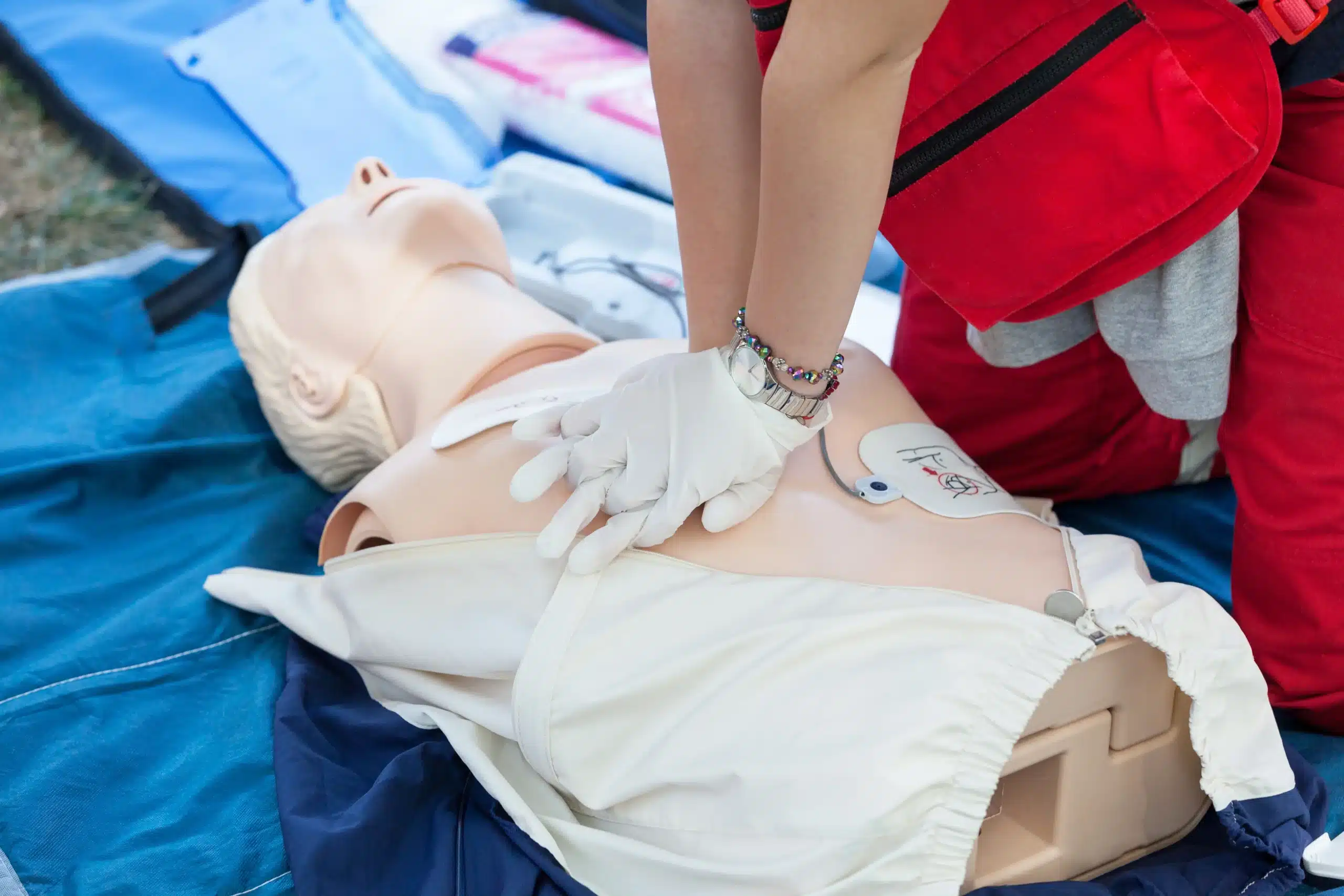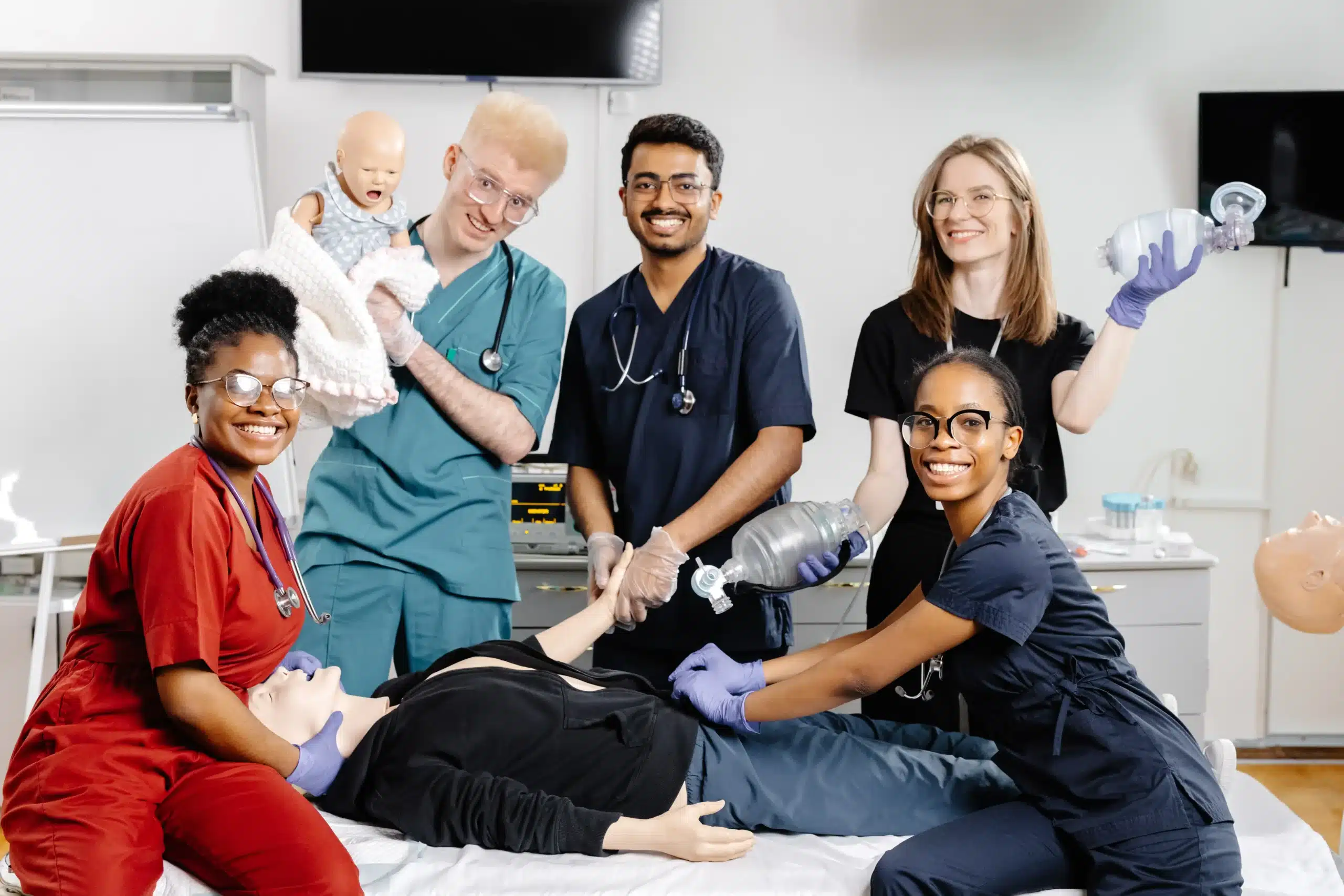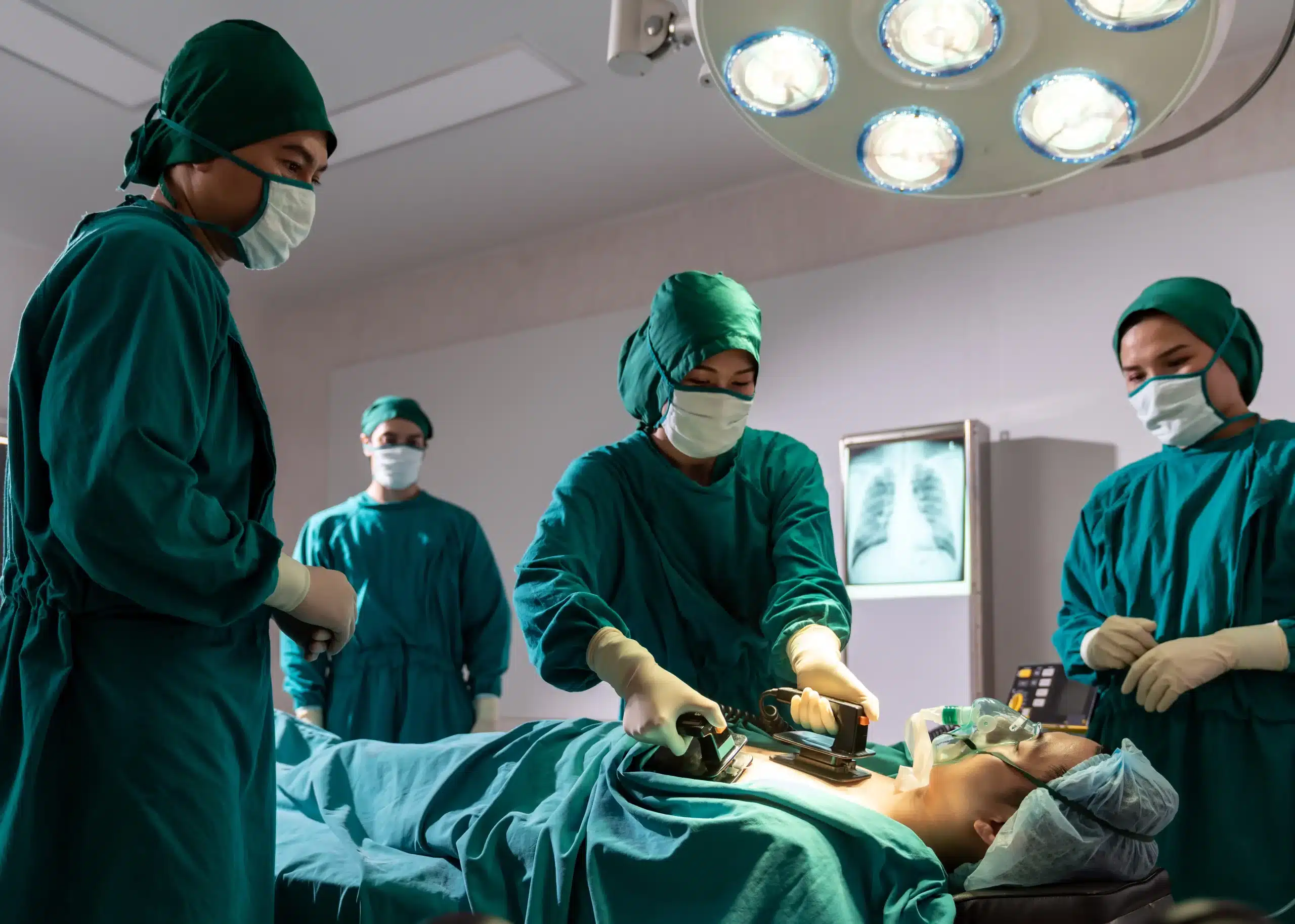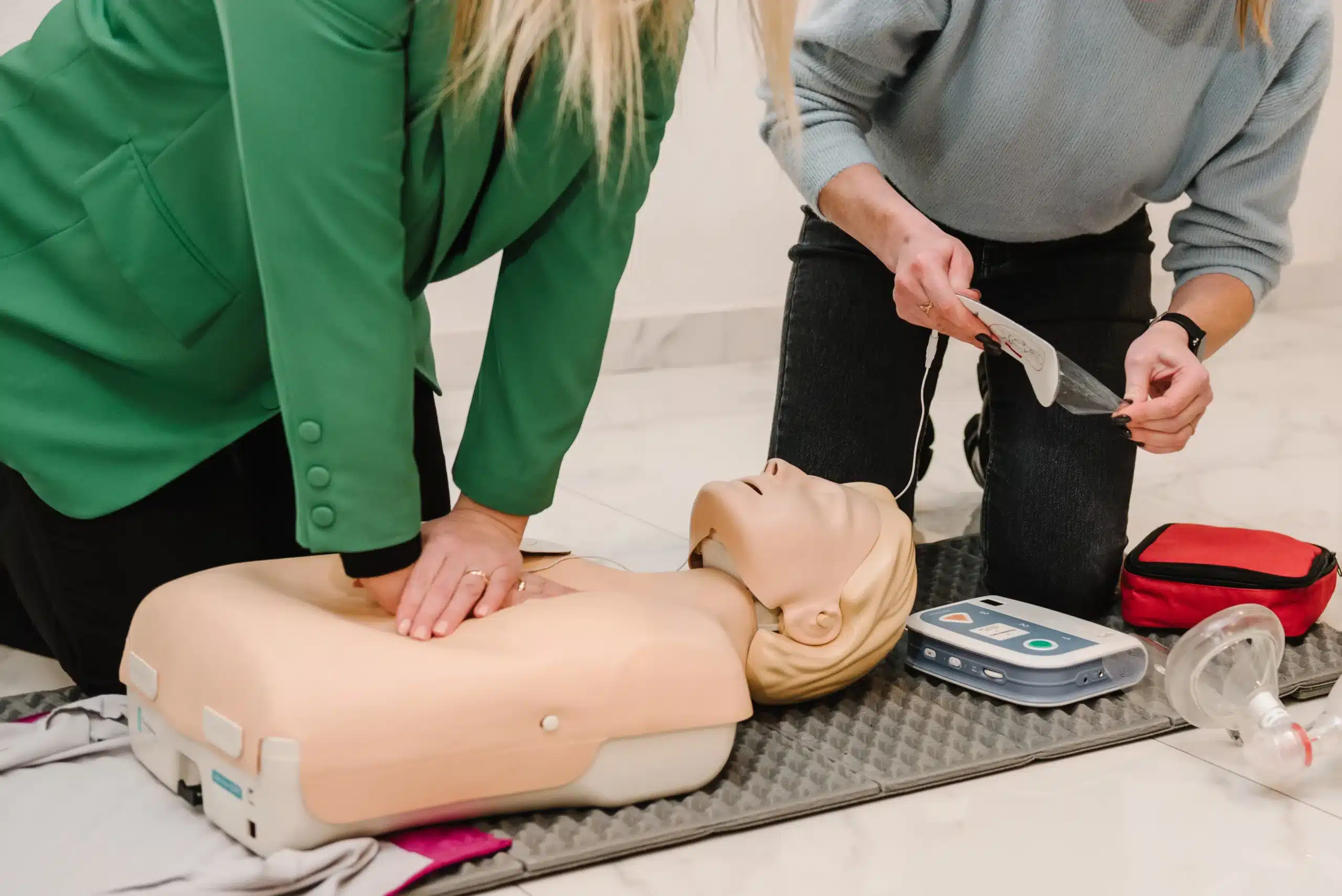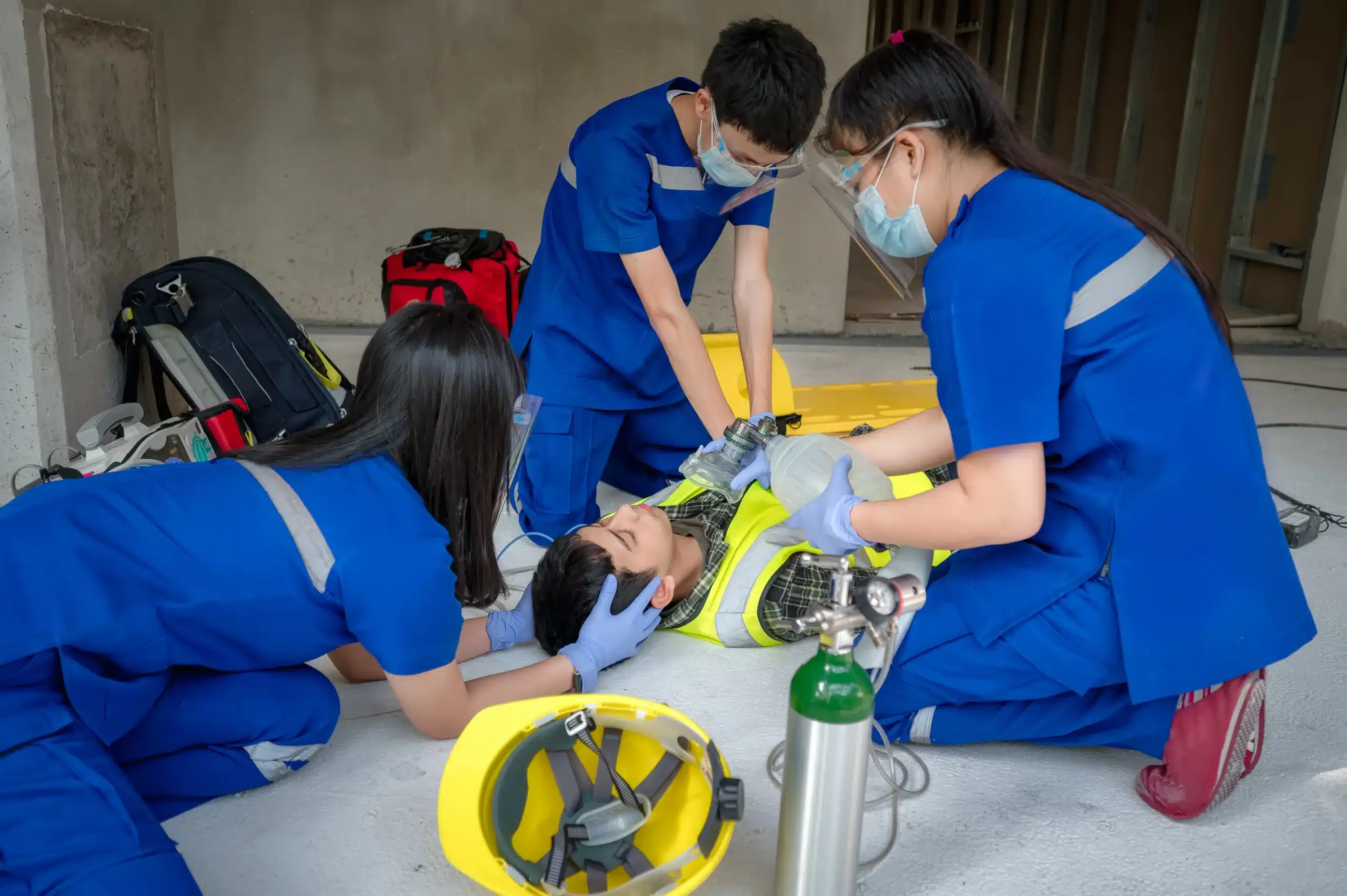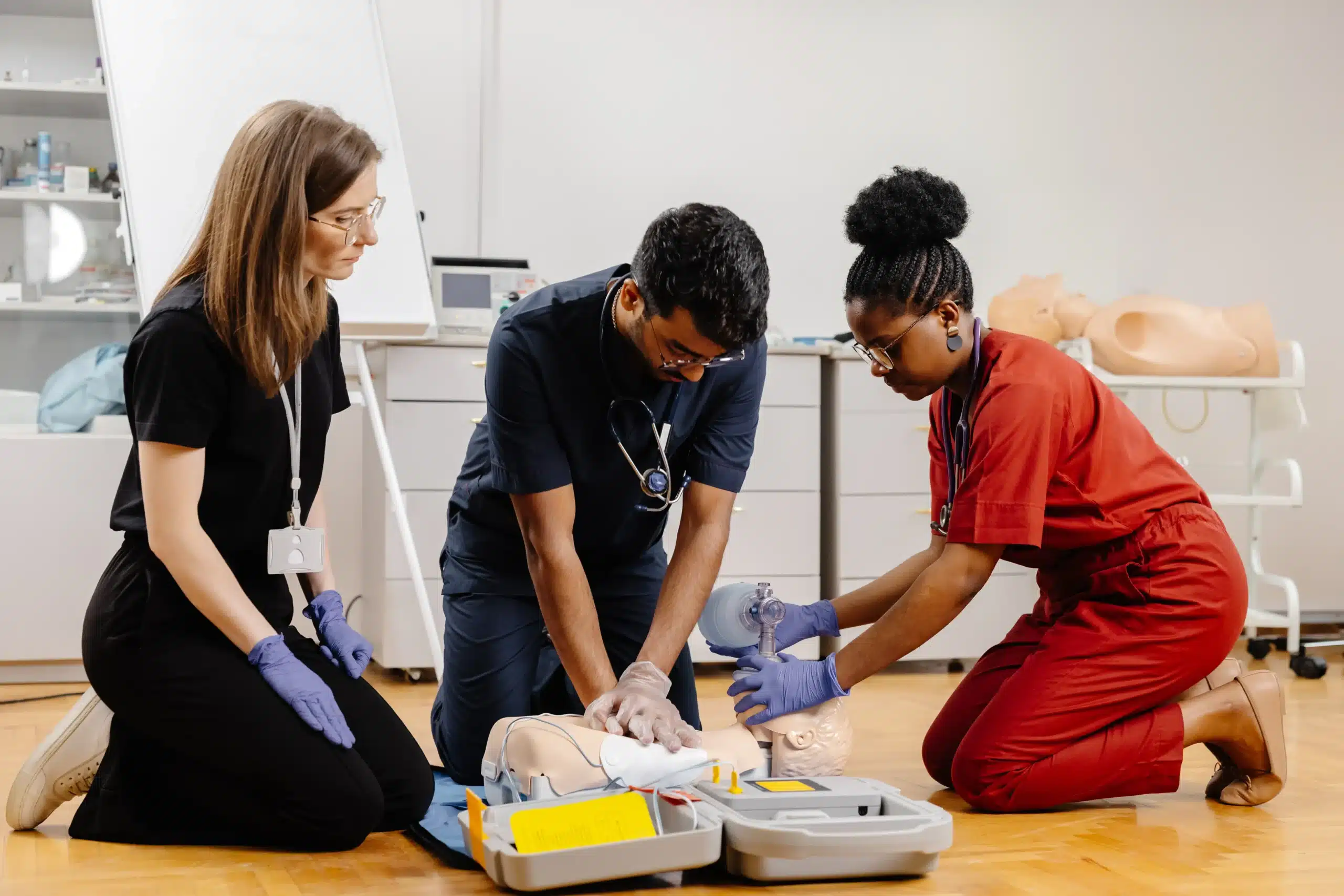Few things are more precious than the health and safety of our babies. As parents and caregivers in Brentwood, we constantly strive to create a safe and nurturing environment for our children. But sometimes, despite our best efforts, emergencies happen. That’s why infant CPR training in Brentwood is an invaluable tool for every parent’s toolkit. It equips you with the life-saving skills to respond effectively if your baby ever stops breathing or experiences a medical emergency. This guide will walk you through the essentials of infant CPR training in Brentwood, helping you find the right class, understand what to expect, and gain the confidence to act quickly and calmly when it matters most. Let’s explore how you can become prepared and empowered to protect your little one.
Key Takeaways
- Infant CPR empowers you to act: Equipping yourself with this essential skill allows you to confidently respond to breathing emergencies in infants, potentially saving a life before professional help arrives.
- Brentwood offers accessible training: Find convenient and affordable infant CPR courses at Safety Training Seminars and other local resources, making it easy to get certified.
- Stay prepared with ongoing practice: Keep your skills sharp with regular practice and refresher courses, ensuring you’re always ready to respond effectively in a real-life emergency.
What is Infant CPR?
Infant CPR is a life-saving technique used when a baby under one year old stops breathing or their heart stops. It involves chest compressions and rescue breaths, specifically adapted for an infant’s delicate body. Knowing infant CPR can make all the difference in an emergency, giving you the skills to potentially save a child’s life. Unlike adult CPR, infant CPR uses modified techniques to provide assistance effectively and safely. This includes different hand placements and compression depths crucial for protecting a baby’s small frame. Understanding these differences is essential for anyone caring for an infant. Being trained in infant CPR empowers you to respond confidently and quickly when seconds count, significantly increasing the chances of a positive outcome. If you’re a parent, grandparent, caregiver, or simply want to be prepared, learning infant CPR is a valuable investment in a child’s safety and well-being.
Why Infant CPR Training Matters in Brentwood
Knowing infant CPR can make all the difference in a critical situation. As parents or caregivers in Brentwood, understanding this specialized technique is essential for protecting the little ones in our lives. It equips us to respond effectively during emergencies, providing immediate care while waiting for professional medical help. Brentwood, like any community, isn’t immune to childhood emergencies. Being prepared can bring immense peace of mind. Taking an infant CPR course empowers you to act quickly and confidently, potentially saving a precious life.
Common Infant CPR Misconceptions
Several myths surround infant CPR, and it’s important to address them. One common misconception is that CPR is only for adults. This isn’t true. Infants can experience cardiac arrest too, requiring a modified CPR technique tailored to their small bodies. Another myth suggests that only trained professionals can perform infant CPR. While professional training enhances your skills and confidence, anyone can learn the basics and provide life-saving assistance. Finally, some believe you should never perform CPR on a conscious infant. This is a dangerous misunderstanding. Knowing when and how to perform CPR, even on a conscious infant who is struggling to breathe, is crucial. Accurate knowledge can empower you to act decisively in an emergency. CPR training helps dispel these myths and provides clear, actionable steps to take in various scenarios.
When Infant CPR Saves Lives
Infants are particularly vulnerable to situations requiring CPR. Choking incidents, near-drowning experiences, or sudden infant death syndrome (SIDS) can necessitate immediate intervention. Their small airways can become easily obstructed, and their developing respiratory systems are more susceptible to distress. Infant CPR training provides the specific skills needed to address these emergencies effectively. Learning how to clear an obstructed airway, perform chest compressions, and provide rescue breaths can significantly increase an infant’s chances of survival. Time is of the essence in these situations, and having the confidence to act quickly can make all the difference. Early intervention can minimize the risk of long-term complications and ensure the best possible outcome.
What Happens in an Infant CPR Course?
Knowing what to expect can make you feel more comfortable attending your first infant CPR class. Here’s a breakdown of what you’ll learn and how the training typically unfolds.
Essential Skills and Techniques
Infant CPR courses equip you with the skills to respond to a baby’s medical emergency. You’ll learn the differences between infant, child, and adult CPR—including how to assess an infant’s condition, deliver rescue breaths, and perform chest compressions. Because choking is a significant risk for infants, the course also covers how to recognize and relieve choking in babies. This includes back blows and chest thrusts, techniques specifically designed to dislodge an obstruction from an infant’s airway. These skills are crucial for any caregiver and can make a life-saving difference. For a deeper dive into these techniques, explore resources like the Essential Infant CPR Guide.
Course Length and Structure
Infant CPR courses are designed to be comprehensive yet manageable. Most courses, like those offered at Safety Training Seminars, can be completed in a few hours. The curriculum typically combines instruction, demonstrations, and hands-on practice. This blended approach allows you to learn the techniques, see them performed correctly, and then practice under the guidance of a certified instructor. Flexible scheduling options, including daytime, evening, and weekend classes, make it easier to fit the training into your busy schedule. Check out our CPR class schedule to find a time that works for you.
Hands-on Practice
A significant portion of infant CPR training involves hands-on practice using infant CPR mannequins. This practical experience is invaluable for building confidence and muscle memory. You’ll learn the correct hand placement for chest compressions, the appropriate depth and rate of compressions, and how to coordinate compressions with rescue breaths. This realistic simulation helps you prepare for the real-life pressures of an emergency. Hands-on training bridges the gap between theory and practice, ensuring you’re ready to act quickly and effectively if ever faced with a situation requiring infant CPR.
Where to Find Infant CPR Training in Brentwood
Finding the right infant CPR class can feel overwhelming, but several excellent resources are available in Brentwood and the surrounding areas. Here’s a breakdown to help you find the perfect fit:
Safety Training Seminars
Safety Training Seminars offers convenient and comprehensive infant CPR training right here in Brentwood. Certified by the American Heart Association, they provide a range of courses, including CPR, BLS, ACLS, PALS, and First Aid. They serve the surrounding communities of Antioch and Concord, with a low-price guarantee, making their courses an affordable option. Check their website for class schedules, including weekday and weekend options.
Beverly Hills CPR
While not directly in Brentwood, Beverly Hills CPR offers a unique opportunity for those interested in becoming certified infant CPR instructors. Their instructor training program provides the necessary steps to become an AHA instructor, including obtaining a provider card, completing the core instructor course, shadowing classes, and having your first class monitored. This option is ideal for healthcare providers or those passionate about teaching CPR. They may even conduct the training at your location.
American Red Cross
The American Red Cross is a nationally recognized organization that provides infant CPR training for parents and caregivers. Their online courses cover Adult, Child, and Baby First Aid/CPR/AED, offering flexibility and convenience. These courses empower parents with life-saving skills in just a few hours. While they may not have a physical location in Brentwood, their online format makes them accessible to anyone in the area.
Local Hospitals and Community Centers
Don’t overlook your local resources! Many hospitals and community centers in and around Brentwood offer infant CPR classes. Check with facilities like John Muir Health or Sutter Delta Medical Center. Additionally, some health insurance plans and Medicaid may offer reimbursement for prenatal classes that often include infant CPR as part of the curriculum. Contact your insurance provider or local community centers for more information on classes and potential reimbursement.
How Much Do Infant CPR Classes Cost?
Knowing the cost of Infant CPR training is an important part of planning your certification. While prices can vary, understanding typical costs, potential discounts, and payment options can make the process smoother.
Typical Prices
Infant CPR classes, often included as part of a larger CPR or First Aid certification course, usually range from around $75 to $150. At Safety Training Seminars, our Infant CPR training is integrated into our comprehensive CPR courses, including American Heart Association PALS certification. We’re proud to offer competitive pricing and a low price guarantee for our courses in Brentwood, covering Antioch, Brentwood, and Concord. Check our website for the most up-to-date pricing on CPR, BLS, ACLS, PALS, and First Aid courses.
Discounts and Promotions
Many training centers offer discounts for group bookings, making it a cost-effective option for families, community groups, or workplaces. Safety Training Seminars offers discount group classes, so be sure to inquire about special rates if you’re registering with multiple people. Keep an eye out for seasonal promotions or discounts for returning students.
Payment Options
Most CPR training centers accept major credit and debit cards. Safety Training Seminars aims to make the registration process as convenient as possible. We also offer flexible payment plans to help you spread out the cost of your training. Check with your chosen provider about specific payment options, including the possibility of paying by check.
How to Schedule Your Infant CPR Training
Knowing how to perform infant CPR can be life-saving, but finding the right class can sometimes feel overwhelming. Let’s break down how to easily schedule your infant CPR training in Brentwood.
Class Options
Safety Training Seminars offers various American Heart Association (AHA) certification courses, including CPR, BLS, ACLS, PALS, and First Aid, right here in Brentwood, CA. They also offer courses in nearby cities, making it convenient no matter where you live in the area. You can find everything from basic CPR training to more specialized certifications like PALS (Pediatric Advanced Life Support). This means you can choose the course that best fits your needs and experience level. If you’re looking for infant-specific training, make sure to confirm that the course covers infant CPR techniques and provides the appropriate certification. For those working with newborns, they also offer the NRP certification through the American Academy of Pediatrics. And, if you’re a childcare provider needing specific training, check out their EMSA Child Care Health and Safety course. Group discounts are also available.
Online and Hybrid Courses
For busy parents and caregivers, flexibility is key. Thankfully, some CPR courses now incorporate online components, allowing you to learn the theoretical aspects of CPR at your own pace. This blended learning approach often combines online modules with in-person skills sessions, giving you the best of both worlds. You can study the material when it’s convenient for you and then practice the hands-on techniques with a certified instructor. Check with Safety Training Seminars to see what online or hybrid options they offer for infant CPR.
Registration
Safety Training Seminars makes registration straightforward. They hold classes daily, from 8 am to 10 pm, offering a wide range of times to accommodate various schedules. Payment is typically due at the time of registration, so be prepared to provide your payment information when you sign up. You can usually register online or by phone, whichever is easier for you. Don’t hesitate to contact their customer service team if you have any questions about the registration process or available class times. They are there to help you get enrolled and on your way to becoming infant CPR certified.
Certification and Continuing Education
After you complete your infant CPR training, you’ll receive a certification—proof that you’ve learned these lifesaving skills. Understanding what this certification means and how to maintain it is key to your preparedness.
Certification Types
Several organizations offer infant CPR certification courses. Safety Training Seminars provides American Heart Association (AHA) courses, a widely recognized and respected standard. These certifications cover CPR, BLS (Basic Life Support), ACLS (Advanced Cardiovascular Life Support), PALS (Pediatric Advanced Life Support), and First Aid. The AHA courses are comprehensive, equipping you with the skills to handle various emergencies. For those working with newborns, the American Academy of Pediatrics NRP (Neonatal Resuscitation Program) certification is also available through Safety Training Seminars. For childcare providers, the EMSA Child Care Health & Safety program offers another valuable certification. You can find more information about PALS certification on the Safety Training Seminars website.
Validity and Renewal
Your infant CPR certification is typically valid for two years. This timeframe ensures caregivers stay current with the latest guidelines and techniques. CPR practices can change, and renewing your certification guarantees you’re always using the most effective methods. Check your certification card for the exact expiration date.
Refresher Courses
Even if your certification is current, participating in refresher courses is a smart move. These courses offer hands-on practice and review, reinforcing your skills and boosting your confidence. Regular practice is crucial for responding effectively under pressure. Consider adding a refresher course to your calendar every year to stay sharp and prepared. Safety Training Seminars offers discounts for group classes, making these valuable refreshers even more accessible. They also have a directory of CPR resources in Northern California.
Get Ready for Your Infant CPR Class
So, you’ve decided to learn infant CPR. Fantastic! Knowing you’re prepared for any emergency involving your little one will give you incredible peace of mind. Here’s how to get ready for your class:
What to Bring
Infant CPR classes are designed to be straightforward and convenient. Your course includes all the necessary materials, including your official certification card, so no need to bring textbooks or manuals. Dress comfortably—think yoga pants or sweats—because the class emphasizes hands-on practice of chest compressions and rescue breaths. You’ll want to be able to move freely and easily. Don’t forget your payment and a form of identification for registration.
Prepare Yourself
Before you arrive, take a moment to reflect on why you’re taking this class. Understanding the importance of infant CPR can make the learning process even more meaningful. It’s about empowering yourself to respond effectively if your baby ever stops breathing, potentially saving their life before professional help arrives. It’s common to have some pre-class jitters. You might even encounter some common misconceptions about infant CPR. One persistent myth is that only trained professionals can perform CPR on infants. The truth is, anyone can learn these life-saving skills. Remember, the class will involve hands-on practice using a CPR training mannequin. This is where you’ll learn the precise hand placement and depth of compressions needed to provide effective CPR. This practical experience is key to building your confidence and preparing you to act quickly and calmly in a real emergency.
Build Confidence: Training to Action
Overcome Fear and Hesitation
It’s normal to feel hesitant about performing infant CPR. Many people worry they’ll make a mistake or cause more harm. Some even think only trained professionals should perform infant CPR. This simply isn’t true. Anyone can learn these life-saving skills. Infant CPR is just as critical as adult CPR. Taking a CPR class will give you the confidence and skills to act quickly in an emergency. Our instructors at Safety Training Seminars create a supportive environment where you can ask questions and practice freely.
Practice at Home
After you’ve completed your infant CPR training, practicing at home is key. Regular review will keep you prepared and comfortable with the techniques. A course like the Safe Beginnings course offers thorough instruction and lifetime access to videos, allowing you to refresh your skills anytime. Knowing CPR can also reduce parental anxiety, especially during mealtimes, because you’ll be prepared to handle choking incidents. Find a safe space at home to rehearse what you learned in class. This builds muscle memory and reinforces the correct procedures. You can even practice with family members and make it a shared learning experience.
More Child Safety Resources in Brentwood
Beyond infant CPR training, Brentwood offers several other valuable resources to help you keep children safe. Equipping yourself with broader knowledge and skills creates a safer environment for the little ones in your life.
Safety Training Seminars partners with the American Heart Association to offer comprehensive courses in Brentwood. These include CPR, BLS, ACLS, PALS, NRP, EMSA, and First-aid certifications. This is a great option for parents seeking to expand their life-saving skills. They also offer discounts for group classes.
New parents can benefit from specialized courses like Infant CPR for Parents. This non-certification class focuses on newborn babies and infants up to one year old, covering infant CPR, first aid, and general baby safety. Hands-on practice is crucial for these skills, and programs like Babysafe with Infant CPR offer exactly that, taught by American Heart Association-credentialed instructors. Learn more about this and other programs at Parent Trust. For additional resources, check out our Northern California CPR Directory.
Finally, remember to check your health insurance or Medicaid plan. Many plans offer reimbursement for prenatal and postnatal classes, including infant CPR and safety training, which can help offset the cost of these important courses.
Related Articles
- Pediatric CPR & First-Aid Training in Concord – Brentwood CPR Classes
- CPR Training in Concord: Find Right Course for You
- Find CPR Courses Near Me: A Practical Guide – Brentwood CPR Classes
- CPR Myths Debunked for Effective Life-Saving Skills
- Online CPR Classes in Brentwood: A Complete Guide
Frequently Asked Questions
Is infant CPR different from adult CPR? Yes, infant CPR differs significantly from adult CPR. It uses modified techniques, including different hand placements and compression depths, to accommodate an infant’s delicate body. Infant CPR courses emphasize these crucial differences, ensuring you’re prepared to respond safely and effectively.
What if I’m afraid I’ll do something wrong during an emergency? It’s completely normal to feel apprehensive. Infant CPR courses address these fears by providing clear, step-by-step instruction and hands-on practice. This builds confidence and prepares you to act calmly and effectively under pressure. Remember, any attempt at CPR is better than none when an infant’s life is at stake.
How often do I need to renew my infant CPR certification? Infant CPR certifications are typically valid for two years. Renewing your certification ensures you stay up-to-date with the latest guidelines and techniques, as CPR practices can evolve. Check your certification card for the exact expiration date and contact your training provider for renewal options.
Besides CPR, what other safety measures should I consider for my baby? Creating a safe environment for your baby goes beyond CPR. Baby-proofing your home, securing heavy furniture, and keeping small objects out of reach are essential steps. Consider installing smoke detectors and carbon monoxide detectors, and always supervise your baby near water. Learning basic first aid can also complement your CPR skills, providing a broader range of responses to common childhood injuries.
What if I can’t afford an infant CPR class? Several resources can help make infant CPR training more accessible. Check with local hospitals, community centers, or your health insurance provider for free or low-cost classes. Some organizations offer financial assistance or scholarships for CPR training. Look for group discounts or community training events, which often offer reduced rates. Prioritizing infant CPR training is a valuable investment in your child’s safety, and exploring these options can help make it a reality.


